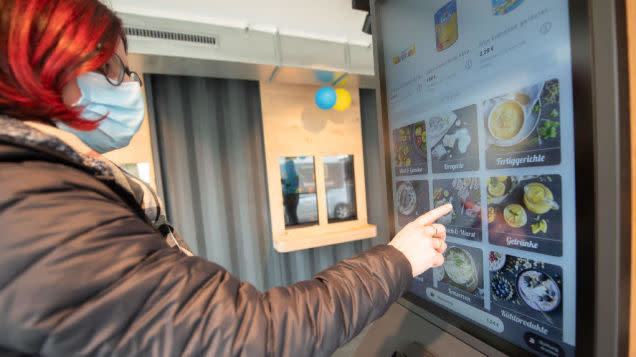From https://www.grocerydive.com/news/meet-the-vertical-automated-grocery-store/597002/ :
More about it here:

 www.yahoo.com
www.yahoo.com
I doubt the building will come anywhere close to being built "by the end of next year." The site it appears they are planning for it seems to look like it is at the corner of Boston Wharf Road and "Autumn Lane" in the Seaport, which right now is a park.


Building a fully automated omnichannel grocery store is certainly an eye-catching idea right now, but it’s also prohibitively expensive for most startups. In addition to pricey robotics and other hardware, real estate costs can balloon into the millions of dollars in urban neighborhoods that have the population density and income levels to support such a model.
That’s why Lincoln Cavalieri wants to build vertically. He’s the co-founder of Urbx, a startup that’s planning to build a grocery store with an automated fulfillment system attached to it that reaches up to 150 feet high and can squeeze into as little as 1,800 square feet of space.
Urbx Market, as it’s being called for now, will focus on filling e-commerce orders to the many consumers that live around its stores, the first of which is slated to be built in Boston by the end of next year. Pickup orders and e-bike deliveries will get orders to shoppers within an hour. There will also be a small storefront where shoppers can order using kiosks, or with their phones, and robots will bring their orders out to them within minutes. Order picking and packing will happen in a basement level, furthering the focus on vertical alignment.
Cavalieri said the store will cost between $5 million and $7 million to build — roughly the same cost to construct a Whole Foods, he said, but with lower real estate costs and higher e-commerce productivity.
"I think the whole process of how a grocery store is laid out is going to change significantly in the future, and it's going to be driven by e-commerce," he said.
Operating small, automated grocery fulfillment in a densely populated urban market isn’t a new concept. But being able to stack the hardware numerous stories high promises to alleviate at least some of the cost pressures that make urban e-commerce so tricky. Urbx’s system uses robots that travel vertically and horizontally along fixed tracks, and incorporates predictive picking software to optimize their routes.
More about it here:

A peek at the skyscraper grocery stores of the future
We’ve talked before about how Amazon has spent the past few years branching into cashierless grocery stores: shoppers simply scan a QR code upon entry, let Amazon monitor them as they shop, and then leave with their items, which will then get charged to their Amazon account. Part of the reason...
I doubt the building will come anywhere close to being built "by the end of next year." The site it appears they are planning for it seems to look like it is at the corner of Boston Wharf Road and "Autumn Lane" in the Seaport, which right now is a park.

